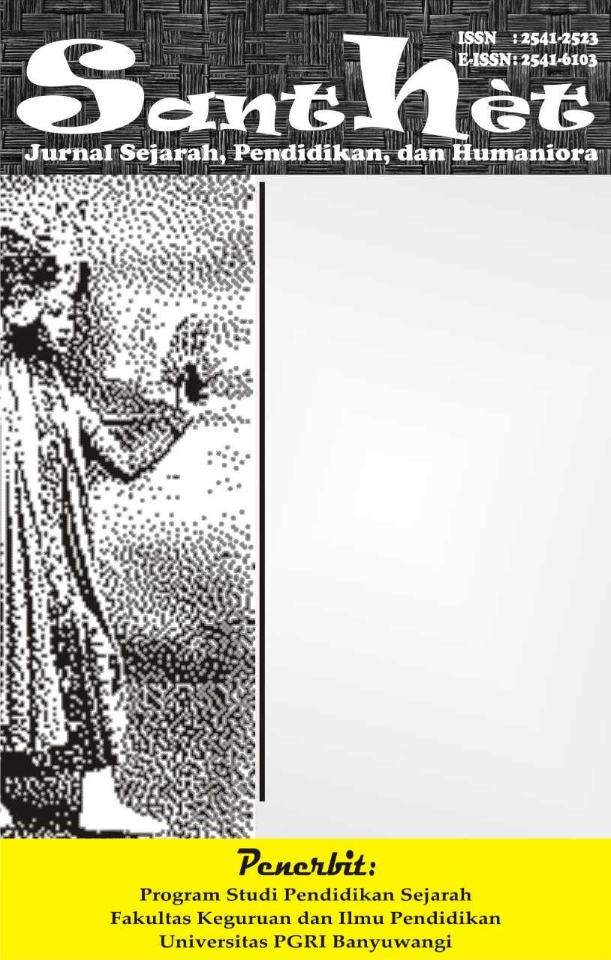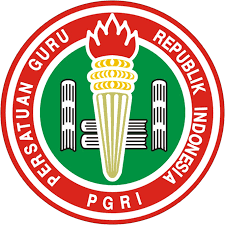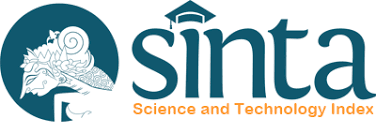THE INFLUENCE OF INFORMATION TECHNOLOGY AND DIGITAL LITERACY ON USERS OF STUDENT SERVICES BASED ON THE SEPADU APPLICATION, RAJA ALI HAJI MARITIME UNIVERSITY
Pengaruh Teknologi Informasi Dan Literasi Digital Terhadap Pengguna Layanan Mahasiswa Berbasis Aplikasi SEPADUUniversitas Maritim Raja Ali Haji
DOI:
https://doi.org/10.36526/santhet.v9i4.5840Keywords:
Teknologi Informasi, Literasi Digital, Aplikasi SEPADU, Universitas Maritim Raja Ali HajiAbstract
The development of information technology and digital literacy has brought a significant transformation in application-based services in higher education. This study analyzes the influence of information technology and digital literacy on the use of SEPADU application-based academic services at Raja Ali Haji Maritime University. With a quantitative approach where data was collected through a questionnaire distributed to 97 student respondents of Raja ALI Haji Maritime University. The results of the study found that digital literacy has a significant effect on the use of the SEPADU application, while information technology does not show a significant influence on the administrative services of SEPADU application users. The value of the correlation coefficient was 40.9% while the remaining 59.1% was influenced by other variables that were not studied in this study. The need to increase students' digital literacy and strengthen information technology infrastructure at UMRAH to support the optimization of campus digital services.References
Abdulkareem, A. K., & Ramli, R. M. (2021). Does Digital Literacy Predict E-government Performance An Extension of DeLone & McLean Information System Success Model. Electronic Government, an International Journal, 17(1), 1. https://doi.org/10.1504/eg.2021.10034963
Al-Emran, M., & Teo, T. (2020). Do knowledge acquisition and knowledge sharingreally affect e-learning adoption? An empirical study. Education and Information Technologies, 25, 1983–1998. https://doi.org/doi.org/10.1007/s10639-019-10062-w
ATABEK, O. (2019). Challenges in Integrating Technology Into Education. Turkish Studies - Information Technologies and Applied Sciences, 14(ITAS Volume 14 Issue 1), 1–19. https://doi.org/10.7827/turkishstudies.14810
Budiastuti, D., & Bandur. (2018). Validitas dan Reliabilitas Penelitian: Analisis dengan NVIVO, SPSS dan AMOS. Mitra Wacana Media.
Compeau, D., Higgins, C. A., & Huff, S. (1999). Social cognitive theory and individual reactions to computing technology: A longitudinal study. MIS Quarterly: Management Information Systems, 23(2), 145–158. https://doi.org/10.2307/249749
Davis, F. D. (1989). Perceived usefulness, perceived ease of use, and user acceptance of information technology. MIS Quarterly: Management Information Systems, 13(3), 319–339. https://doi.org/10.2307/249008
Denhardt, R. B., & Denhardt Janet V. (2000). The New Public Service. PublicAdministration Review, 60(6).
Duhita, A. S. (2018). Inovasi Produk E-Lampid dalam Meningkatkan Kualitas Pelayanan Administrasi Kependudukan di Kota Surabaya. Kebijakan Dan Manajemen Publik, 6(2), 1–11. http://journal.unair.ac.id/download-fullpapers-kmp1430c8e0b0full.pdf
El-Masri, M., & Tarhini, A. (2017). Factors affecting the adoption of e-learning systems in Qatar and USA: Extending the Unified Theory of Acceptance and Use of Technology 2 (UTAUT2). Educational Technology Research and Development, 65(3). https://doi.org/10.1007/s11423-016-9508-8
Elpira, B. (2018). Rerung, R. R. (2018). E-Commerce : Menciptakan Daya Saing Melalui Teknologi Informasi. Deepublish. (Vol. 3, Issue 2). Universitas Islam Negeri AR-Raniryu.
Ghozali, I. (2013). Aplikasi Analisis Multivariat dengan Program IBM SPSS (7th ed.). Universitas Diponegoro.
Giovanni, F., & Komariah, N. (2020). Hubungan Antara Literasi Digital Dengan Prestasi Belajar Siswa Sma Negeri 6 Kota Bogor. LIBRARIA: Jurnal Perpustakaan, 7(1), 147. https://doi.org/10.21043/libraria.v7i1.5827
Kadir, A. (2018). Pemrograman Android & Database (Diterbitka). Pemrograman Android & Database (Diterbitka).
Kasmir. (2017). Manajemen Sumber Daya Manusia (Teori dan Praktik). PT. Rajagrafindo Persada.
Khairinal. (2016). Menyusun proposal skripsi, tesis, & disertasi. Salim.
Kotler, P., & Keller, K. L. (2016). Manajemen Pemasaran (12th ed.). PT. Indeks.
Kuncoro, M. (2019). Metode Riset untuk Bisnis dan Ekonomi (3rd ed.). Air Langga.
Lestari, S. M., Iswan, & Suryadi, A. (2017). Pengaruh Literasi Digital Dan Efektivitas Aplikasi Sikad Terhadap Kualitas Pelayanan Dan Kepuasaan Mahasiswa Fakultas Ilmu Pendidikan Universitas Muhammadiyah Jakarta. 2(1).
Moenir. (2015). Manajemen Pelayanan Umum Indonesia. PT Bumi Aksara.
Muslihudin, M., & Oktavianto. (2016). Analisis dan Perancangan Sistem Informasi Menggunakan Model Terstruktur dan UML. CV. Andi Offset.
Nasionalita, K., & Nugroho, C. (2020). Indeks Literasi Digital Generasi Milenial di Kabupaten Bandung. Jurnal Ilmu Komunikasi, 18(1), 32. https://doi.org/10.31315/jik.v18i1.3075
Nguyen, X. (2014). Switching on To Digital Literacy ? a Case Study of English Language Teachers. November 2014.
Rerung, R. R. (2018). E-Commerce Menciptakan Daya Saing Melalui Teknologi Informasi. Deepublish.
Ridwan, & Kuncoro, E. A. (2017). Cara Menggunakan dan Memaknai Analisis Jalur (Path Analysis). Alfabeta.
Romney, M. B., & Steinbart, P. J. (2016). Sistem Informasi Akuntansi, Diterjemahkan oleh Kikin dan Novita. Salemba Empat.
Roztocki, N., Strzelczyk, W., & Weistroffer, H. R. (2021). Impact of Pandemics on e-Government Services: A Pilot Study. Proceedings Annual Workshop of the AIS Special Interest Group for ICT in Global Development, April 2022. https://aisel.aisnet.org/globdev2021/7
Ruliana, P. (2016). Komunikasi Organisasi: Teori dan Studi Kasus. Rajagrafindo Persada.
Sahilananda, Z. N., & Jumino. (2021). . Kemampuan Literasi Digital Anggota Pers Mahasiswa Hayamwuruk Fakultas Ilmu Budaya Universitas Diponegoro dalam Merespon Hoax. ANUVA, 5(1), 89–99. https://doi.org/. https://doi.org/10.14710/anuva.5.1.89-99
Santoso, K. (2018). Rancang bangun sistem informasi penggajian karyawan (studi kasus di pt. Rumah sakit padjadjaran jatinangor). (Information System Journal, 1(2), 1-15.
Silvana, H., & Darmawan. (2018). Pendidikan Literasi Digital Di Kalangan Usia Muda Di Kota Bandung. Jurnal Penelitian Dan Pengembangan Pendidikan, 16(2), 146.
Sudaryanto, M. R., Hendrawan, M. A., & Andrian, T. (2023). The Effect of Technology Readiness, Digital Competence, Perceived Usefulness, and Ease of Use on Accounting Students Artificial Intelligence Technology Adoption. E3S Web of Conferences, 388. https://doi.org/10.1051/e3sconf/202338804055
Sugiyono. (2018). Metode Penelitian Kuantitatif, Kualitatig, dan R&D. Alfabeta.
Suryadi, A. (2020). Pengaruh literasi digital dan efektivitas aplikasi sikad. Muhammadiyah Jakarta, 2, 41–46.
Sutarman. (2019). Pengantar Teknologi Informasi. Bumi Aksara.
Talebi, H., & Khatibi Bardsiri, A. (2023). The Impact of Information Technology on Service Quality, Satisfaction, and Customer Relationship Management (Case Study: IT Organization Individuals). Journal of Management Science & Engineering Research, 6(2), 24–31. https://doi.org/10.30564/jmser.v6i2.5823
Tarhini, A., Liu, X., Hone, K., & Tarhini, T. (2016). Examining the moderating effect of individual-level cultural values on users’ acceptance of E-learning in developing countries: a structural equation modeling of an extended technology acceptance model, Interactive Learning Environments. ERIC, 3(25), 306–328. https://doi.org/10.1080/10494820.2015.1122635
Tjiptono, F. (2019). STRATEGI PEMASARAN : Prinsip & Penerapan. Andi.
Tugtekin, E. B., & Dursun, O. O. (2021). Effect of animated and interactive video variations on learners’ motivation in distance Education. Education and Information Technologies, 3(27), 3247–3276.
UNESCO. (2018). Digital literacy and beyond. UNESCO EDUCATION SECTOR, 10.
Warsita, B. (2018). Teknologi Pembelajaran. PT Rineka Cipta.





























